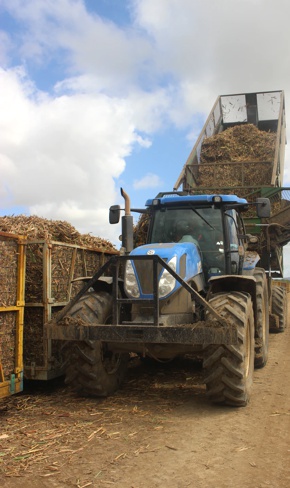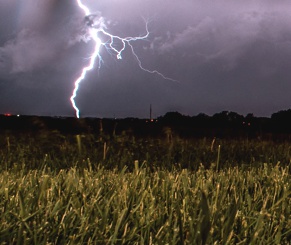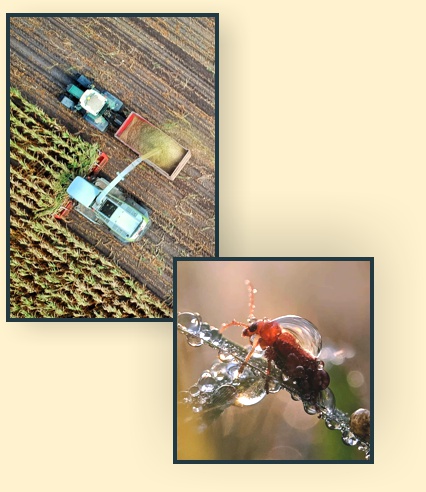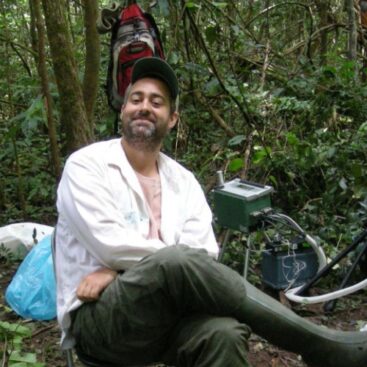Optimization of pollination and increase of productivity and resilience of crops
Coordination: Danilo Boscolo (FFCLRP/USP)
For 20 years, the importance of knowledge production about Ecosystem Services provision and conservation has been emphasized worldwide. Recent increases in tropical cultivated areas tend to be intensified with the reduction of global poverty and malnutrition. However, agricultural landscape changes can homogenize rural spaces, compromising Ecosystem Services such as pollination and biological pest control, with the accentuating effects of climate change. Consequent decreases in agricultural productivity due to services deficit can force farmers to occupy increasingly larger areas, in a feedback cycle of services loss that can lower productivity. The solution to this depends on identifying synergies between agriculture and Ecosystem Services, providing decision makers with clear guidelines for land use development along with the establishment of networks of protected areas.
Recognizing that promoting landscapes with greater environmental heterogeneity between crops can improve the maintenance of more diverse and resilient biological communities and the provision of Ecosystem Services as an opportunity to foster conservation along with increasing crop yields.
But to overcome the challenge of identifying which locations are susceptible to services deficits and finding environmentally friendly low-cost solutions, will demand that we recover, treat and model a large amount of available data on the distribution of service providing species and their relationship to the structure of the landscapes, the surrounding mosaics of protected areas, and its probable sensitivity to climate change.
Our objective is to understand the potential provision of Ecosystem Services for agriculture and establish guidelines for Integrated Pest and Pollinator Management (IPPM) in tropical crops through land management policies. We also propose the use of future climate change impact scenarios on these systems to better offset their impacts. Through the development of new strategic protected areas development planning, we will provide subsidies to foster IPPM, and consequently crop productivity in a sustainable and long-term manner.




Activities in this Challenge
The Policy co-production challenge will follow four main stages:
Review about the main predictors of pollinator and pest control species distribution
This review will be conducted systematically from the available literature and summarized into adequate predictors of the potential distribution of these species according to observable environmental conditions. These predictors shall reflect the variables with the greatest impact on agricultural productivity and Ecosystem Services for crops. In order for us to spatialize Ecosystem Services potentials, these predictors must have an explicit spatial structure, such as climatic data and landscape structure parameters. In addition, we will consider in this analysis the location of Protected Areas, as well as data on the application of pesticides in crops.
Survey and curation of the occurrence records of native pollinators and pest control species
We will compile occurrence records for the Atlantic Forest and Cerrado of the most important species with the potential to deliver these Ecosystem Services to crops. The decision on which species are of greatest importance and potential to aid crop productivity through Ecosystem Services management will be made by all the team involved in solving this challenge. The available data will be mined, tabulated and verified to correct geographical inaccuracies and standardize the taxonomic nomenclature. We will generate an unified database for this project, that shall eventually become openly available.
Implementation of predictive distribution models for the selected pollinator and pest control species
The occurrence data of species with economic importance found in Task 2 will be associated with the environmental variables raised in Task 1 so that we can generate predictive models of species occurrences and the potential Ecosystem Services in agricultural/natural landscapes. Through modeling, we will generate information at spatial scales that are in accordance with the needs and capacities of territorial management policy making. This step will be carried out by a team of specialists and then discussed and adjusted with the whole team of the project.
Priority areas for landscape management aimed at maintaining Ecosystem Services for economically relevant crops and the formulation of public management instruments
We will define the most important factors to be considered as indicators of Ecosystem Services potentials and deficits according to surrounding environmental conditions, also incorporating protected areas network, pesticide use, and data on crop yields and dependence on Ecosystem Services. This will demand the direct interaction of academic teams with policy making agencies and secretariat (SAA and SIMA). All data will be used to identify where: i) the provision of the Ecosystem Services, although currently existing, can be threatened in the near future; and ii) the provision of these services is currently deficient, identifying reasons to find solutions, for example through better technical rules for pesticides or procedures for forest restoration, or the establishment of new protected areas. This synthesis effort will be of great value to agronomists, farmers, policy makers and environmental managers, favoring the solution of Ecosystem Services deficits using land use planning policies for biological conservation and the connection of biodiversity areas to where they are necessary for services provision.
Apply the models to future climate change and land use scenarios and formulate associated management instruments
The modeling processes presented above are essential for us to identify places with different potentials and weaknesses in the provision of Ecosystem Services. In a context of climate changes, the distribution of these locations may vary over time, with the need for medium and long-term planning options. We shall model beyond the current states of the system, generating projections of climate and land use changes with different development scenarios to assess possible future impacts on services potential and their synergies and trade-offs with agricultural productivity. We will select the most important climatic and land use variables to derive spatially explicit future projections of services delivery. The results of this additional modeling will be converted into policy guidelines for future land development management.

Challenge team
In Brazil – Luiz Antonio Martinelli (CENA/USP), Fabiana Oliveira da Silva (UFS), Favizia Oliveira Silva (UFBA), Gustavo Casoni da Rocha (FF), João Demarchi (IZ), Eliane Vieira (IBio), Regina Cristina Batista (IBio), Gisele dos Santos Souza (IBio), Rodrigo Mello (ICMC-USP).
- USP – Facudade de Filosofia, Ciências e Letras de Ribeirão Preto
- UFSCar – Departamento de Ciências Ambientais
- FCAV/UNESP – Departamento de Ciências da Produção Agrícola
- UFBA – Instituto de Biologia
Rafael Chaves, Paloma Arakaki, Silvana Back Franco, Isabel Fonseca Barcellos, Camila Matias Goes de Abreu.
CENA/USP; UFS; IZ; IBio; IBio; ICMC-USP







